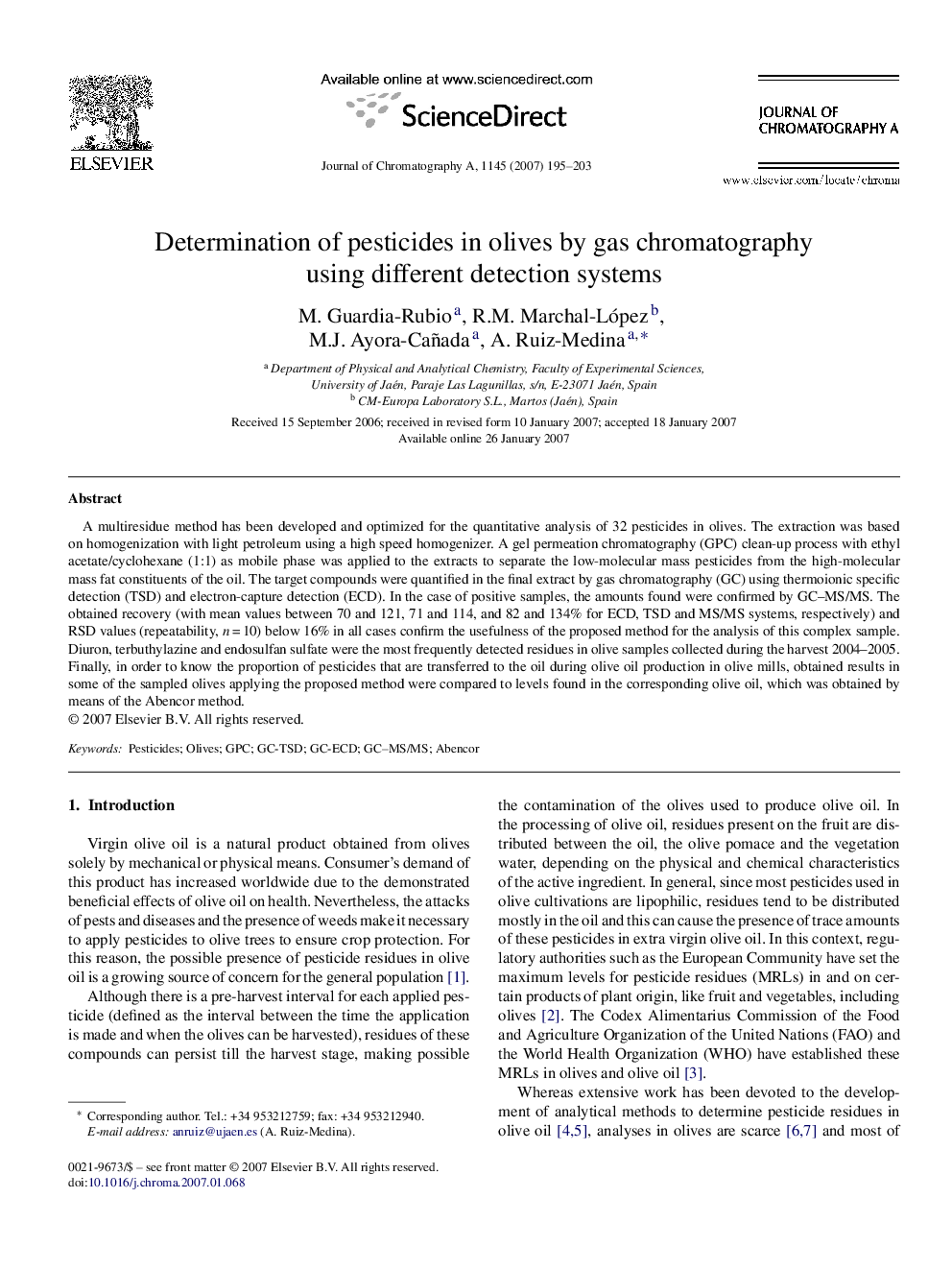| Article ID | Journal | Published Year | Pages | File Type |
|---|---|---|---|---|
| 1209038 | Journal of Chromatography A | 2007 | 9 Pages |
A multiresidue method has been developed and optimized for the quantitative analysis of 32 pesticides in olives. The extraction was based on homogenization with light petroleum using a high speed homogenizer. A gel permeation chromatography (GPC) clean-up process with ethyl acetate/cyclohexane (1:1) as mobile phase was applied to the extracts to separate the low-molecular mass pesticides from the high-molecular mass fat constituents of the oil. The target compounds were quantified in the final extract by gas chromatography (GC) using thermoionic specific detection (TSD) and electron-capture detection (ECD). In the case of positive samples, the amounts found were confirmed by GC–MS/MS. The obtained recovery (with mean values between 70 and 121, 71 and 114, and 82 and 134% for ECD, TSD and MS/MS systems, respectively) and RSD values (repeatability, n = 10) below 16% in all cases confirm the usefulness of the proposed method for the analysis of this complex sample. Diuron, terbuthylazine and endosulfan sulfate were the most frequently detected residues in olive samples collected during the harvest 2004–2005. Finally, in order to know the proportion of pesticides that are transferred to the oil during olive oil production in olive mills, obtained results in some of the sampled olives applying the proposed method were compared to levels found in the corresponding olive oil, which was obtained by means of the Abencor method.
